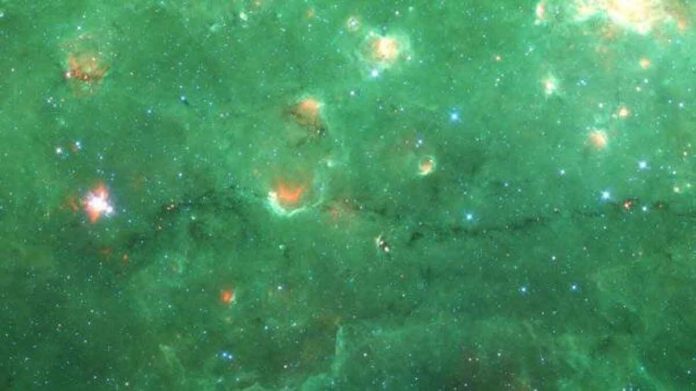Star formation in the Milky Way occurs in long, dense filaments of gas and dust. It stretches along the spiral arms. Dubbed “bones” delineate the galaxy’s densest skeletal spiral structures. These filaments are fifty times longer. They are wide and have coherent internal motions along their lengths. Most of the key physical properties of these bones are known. We know of their magnetic field properties. But it is generally unconstrained. These fields can play a critical role in supporting the gas and dust against gravitational collapse into new stars. It can assist the flow of mass along the bone into cores making new stars.
Magnetic fields are difficult to measure in space. The common method relies on the emission from non-spherical dust grains. This aligns their short axes with the direction of the field. This results in infrared radiation which is preferentially polarized perpendicular to the field. Scientists measured this faint polarization signal and inferring the field strength and direction. It has become easier to do with the HAWC+ instrument on SOFIA. It is NASA’s Stratospheric Observatory for Infrared Astronomy. It is a 2.5-m telescope. SOFIA flies as high as 45,000 feet which is above most of the atmospheric water vapor that absorbs far infrared infrared signals from space.
Scientists used HAWC+ polarization to map the detailed magnetic field along the bone G47.06+0.26. This filament is 190 light-years long. It is five light-years across. It has a mass of 28,000 solar-masses with a typical dust temperature of 18 kelvin. The IRAC camera on Spitzer had mapped the bone to identify the regions of young star formation. Astronomers determined where along the bone the magnetic field is able to support the gas against collapse into stars. They identified the regions where it is too weak. They mapped low density regions. There the field is more complex in shape. G47.06+0.26 is the first object studied in a larger program to map the magnetic fields in ten of the eighteen known Milky Way bones. Scientists will complete analysis of this larger statistical sample. They expect to be able to quantify how the strength and orientation of fields influence the evolution of the bones and their pockets of star formation.

